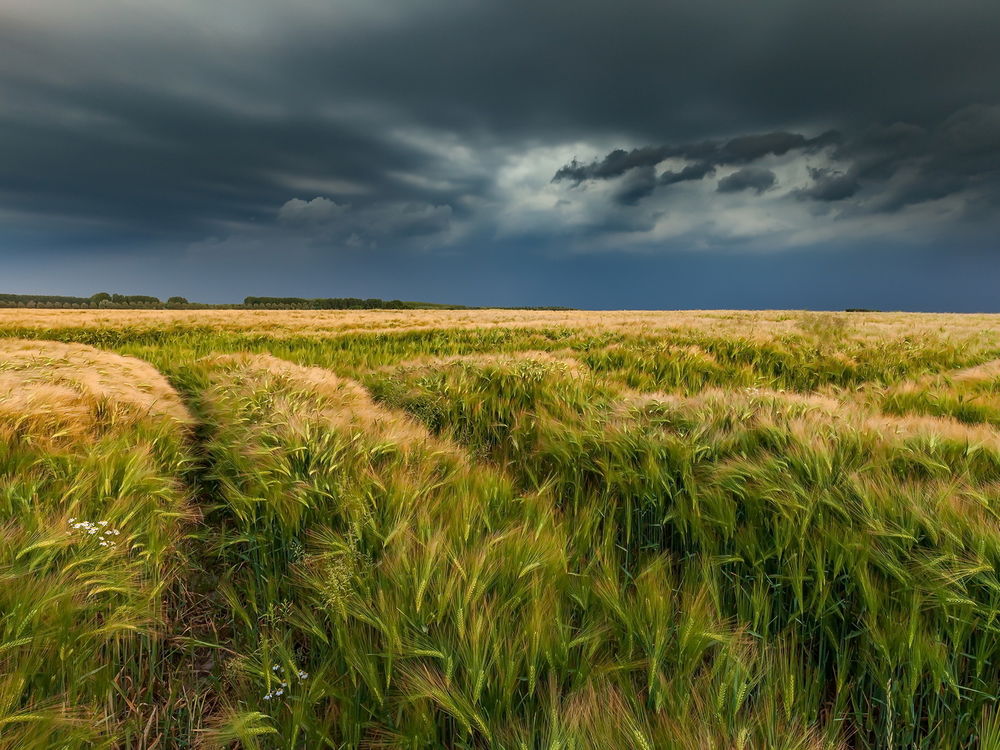A huge sigh of relief was heard from Canada recently as the most significant rain in years fell across a large part of the Prairies. The rain event seemed to come out of nowhere for those convinced the northern US Plains and Canada Prairies were destined for another year of drought.
The forecast came largely from long-range computer forecast modeling, but the programmers have yet to recognize the cyclicalness of weather. Long-range forecasting could take a giant leap forward if some of these natural cycles in weather were more trusted.
This year’s weather in North America has continued to follow a blending of three simple weather patterns. One is associated with the post 22-year solar cycle, another pertains to high altitude winds following a pattern dubbed the lunar cycle, which is based on planetary positions in the solar system, and the interaction of each on the earth. The third pattern had the greatest influence on spring weather in North America this year resulting in a drier bias in the central United States, wet bias in the northern Plains and excessive moisture in the mid-south, southern Plains and southeastern states. This last pattern was only seen one other time since 1950 and that was in 1967-68.
Weather forecasting is not that simple, though. It is just coincidental that this spring and early summer weather followed these three cycles. There are many other weather patterns that repeat in the atmosphere at any given time and the art of long-range forecasting is tied to finding the right combination of weather patterns. If it was as simple as suggested here, there would be no need for meteorologists.
However, it would be a great experiment in artificial intelligence (AI) technology to see how these long-term repeating cycles would influence traditional weather forecasting tools. It is the opinion of this forecaster that once these patterns are studied more closely, they will have to be thrown into the mix with other AI parameters to create a better forecast.
 Credit: ©WORLD WEATHER INC.
Credit: ©WORLD WEATHER INC.The drought years 2020 through 2024 in North America, including the multi-year La Niña event that perpetuated drought in western North America and created a similar bout of dryness in Russia, are patterns that have been seen before. In fact, papers have been written on the subject matter.
There was a time that belief in the solar cycle was so strong that sociologists predicted periods of human unsettledness resulting in wars, riots and government overthrows during the periods between the solar minimum and the solar maximum, especially in the 22-year solar cycle. Droughts are more severe in these periods of time and volcanoes and earthquakes were suggested to be more likely to evolve in extremes during these time periods as well.
Strangely enough, the most intense volcanic eruption in modern times occurred Jan. 15, 2022, near the Tonga Islands. It was the most explosive eruption ever recorded, stronger than Krakatoa and Mount Pinatubo. The Hunga Tonga Volcano, as it has come to be known, was an underwater volcano far removed from any populated part of the world, but its stratospheric injections of Pacific Ocean moisture occurred during the same period of the 22-year solar cycle.
That moisture intensified global temperature anomalies in 2022 and 2023, worsening drought that was already a part of the 22-year solar cycle and the multi-year La Niña. The impact of all this was on all of the earth, but possibly greatest in North and South America where scientists will one day prove that the failing monsoon patterns in both continents for two years in a row was associated with the volcano that may have been a part of the 22-year solar cycle. At the same time, the world was dealing with the impacts of COVID and general human unsettledness.
Now in 2025, the year following the peak of the 22-year solar cycle and long enough after the Hunga Tonga Volcano that its global effects are waning, world weather seems to be returning to a more typical pattern. June rainfall in Canada has been the best in years and that follows the return of more routinely occurring rainfall in the United States.
Temperatures have not been nearly as anomalously warm as those in recent past years. In fact, it has been cooler than usual more often this year than it has been warm or hot. Dryness in the United States has failed to fester into a big drought problem, Canada has been at least partially relieved of drought and all indications suggest Mexico will see much improved rainfall as the 2025 summer monsoon returns after a two-year hiatus. South America’s weather also returned to normal this year and Brazil and Argentina crop production improved greatly because of the improved rainfall for the first time in a few years.
Russia’s 2024 drought seems to have dissipated as well and a dry pattern in China this spring has been greatly eased. All of this has occurred since the solar (sunspot) cycle peaked last summer. The only place in the world where weather is ebbing more stressful is in Western Europe.
Interestingly, if one plots the futures market prices for corn and soybeans against the solar cycle, they would see the trading year that follows the peak of the solar (sunspot) cycle is usually a lackluster trading year — mainly due to the return of favorable weather after multiple years of extreme conditions. That is exactly what has happened in 2025.
If these patterns continue to prevail, the outlook for market prices from September 2025 to September 2026 will be more decisively higher compared to this year, which is typical for the second year past the solar maximum.




